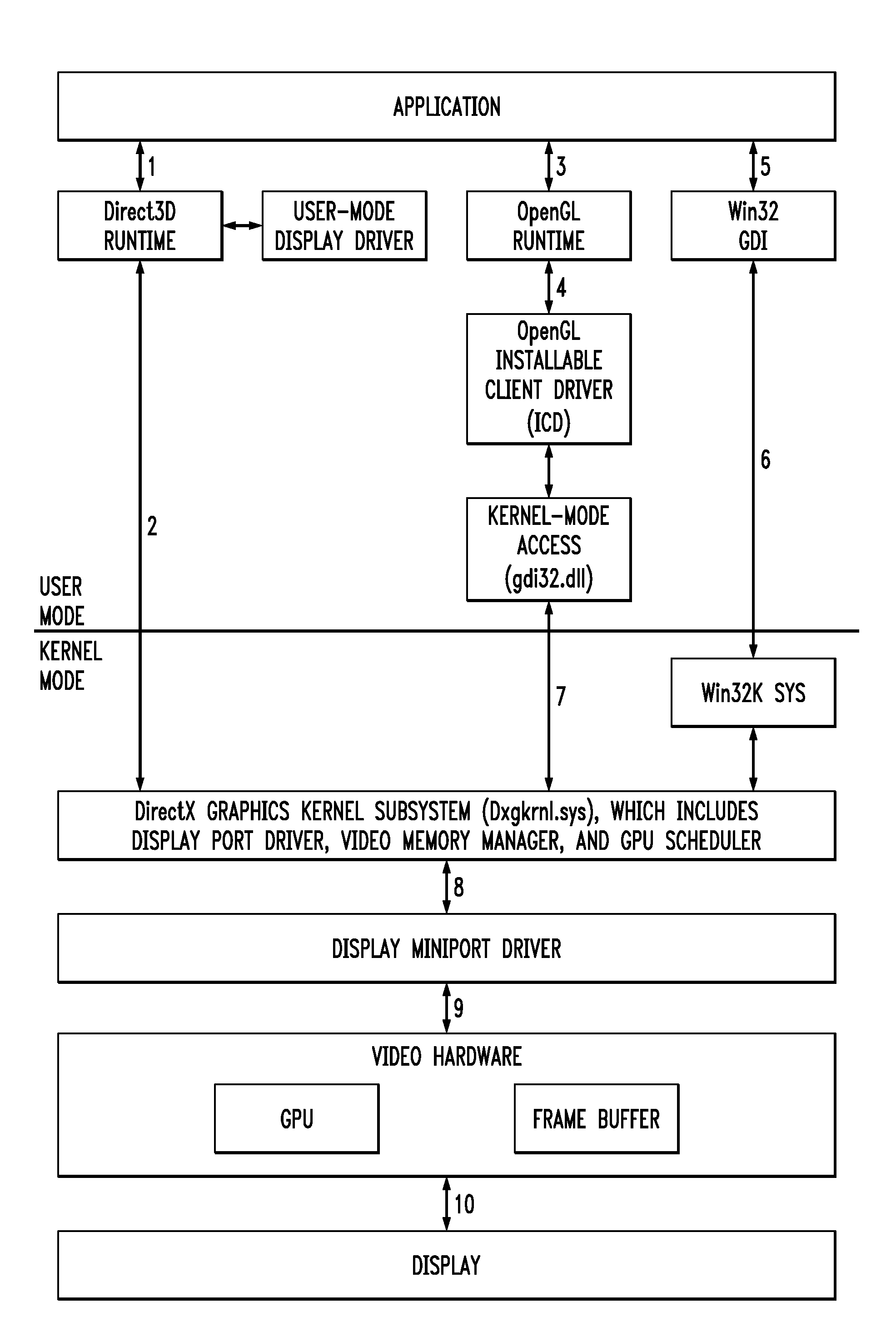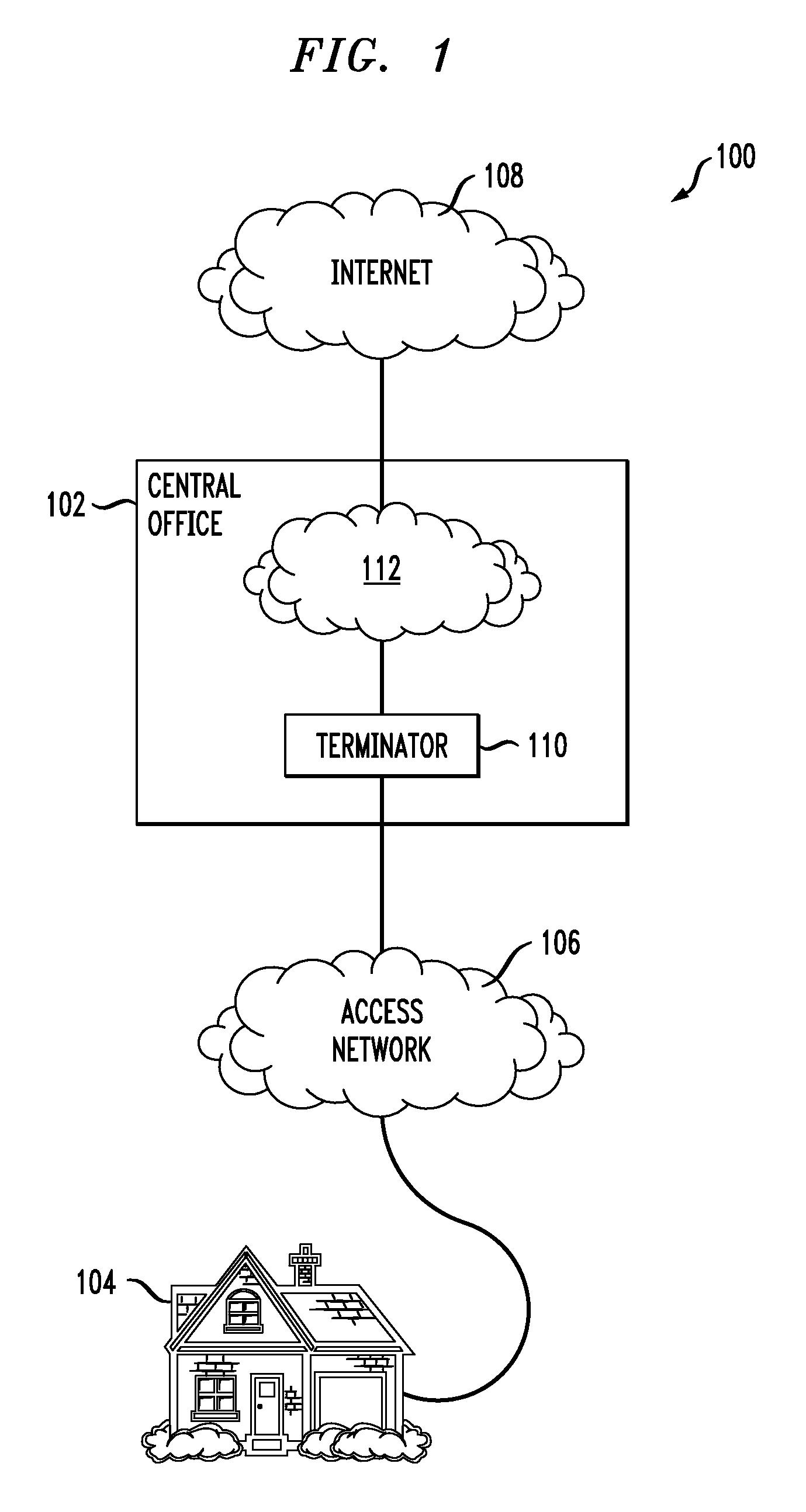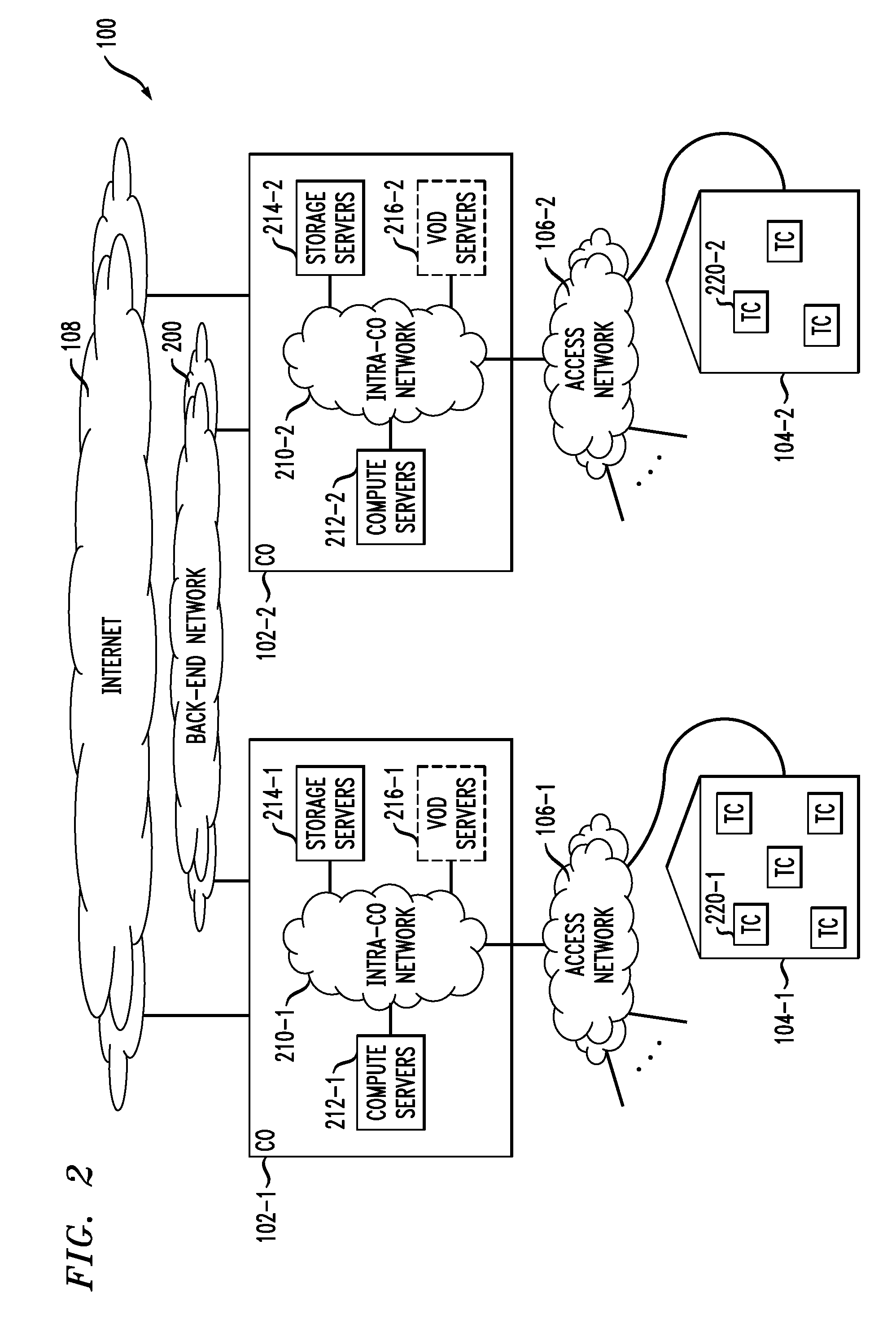Central office based virtual personal computer
a virtual personal computer and central office technology, applied in the field of computers, can solve the problems of pcs and the operating system that typically runs on them, the security of pcs and the operating system is often insecure, and the improvement of the quality of the computer is not easy, and achieves the effects of less breakage or becoming, less breakage, and less damag
- Summary
- Abstract
- Description
- Claims
- Application Information
AI Technical Summary
Benefits of technology
Problems solved by technology
Method used
Image
Examples
Embodiment Construction
[0026]The present invention will be illustrated below in conjunction with exemplary CO-based VPCs implemented in a communication system. It should be understood, however, that the invention is not limited to use with the particular types of communication systems or VPC components and features disclosed. The invention can be implemented in a wide variety of other types of communication systems, and in numerous alternative VPC configurations. For example, although illustrated below in the context of particular CO-based systems, the disclosed techniques can be adapted in a straightforward manner to other types of wired or wireless communication systems, including cellular systems, multiple-input multiple-output (MIMO) systems, Wi-Fi or WiMax systems, cable systems, etc.
[0027]The terms “central office” or CO as used herein are intended to include without limitation a CO of an Ethernet over passive optical network (EPON) communication system, a Gigabit passive optical network (GPON) comm...
PUM
 Login to View More
Login to View More Abstract
Description
Claims
Application Information
 Login to View More
Login to View More - R&D
- Intellectual Property
- Life Sciences
- Materials
- Tech Scout
- Unparalleled Data Quality
- Higher Quality Content
- 60% Fewer Hallucinations
Browse by: Latest US Patents, China's latest patents, Technical Efficacy Thesaurus, Application Domain, Technology Topic, Popular Technical Reports.
© 2025 PatSnap. All rights reserved.Legal|Privacy policy|Modern Slavery Act Transparency Statement|Sitemap|About US| Contact US: help@patsnap.com



